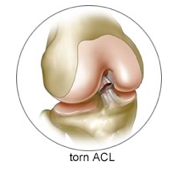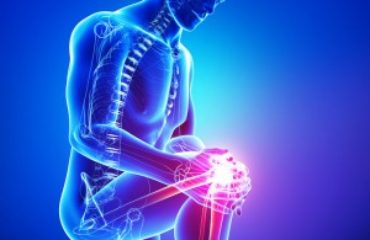Imagine you are an adult who plays recreational soccer, or a high school student who plays basketball in his/her free time. At one particular game, you land awkwardly after a jump and feel your knee wobble and buckle, followed by immediate swelling and pain when your weight is put on that leg. A necessary trip to an orthopedic surgeon reveals that your ACL is torn and now the only thing to look forward to is surgery, 6 to 12 months of physical therapy, and quite possibly, an even longer absence from sports.
The above scenario, although frightening, is nothing compared to the increased possibility of developing an ACL injury a second time, even after surgery. More and more players and people who play sports recreationally are developing ACL injury not once,  but twice! Why is this happening?
but twice! Why is this happening?
Looking at the Risk Factors for ACL Re-injury
According to a study conducted by the American Orthopedic Society for Sports Medicine, experts examined the factors that contribute in the re-injury of the ACL and the risks involved. In the United States, approximately 200,000 ACL reconstruction procedures are performed each year by orthopedic surgeons. This data was examined to gain better understanding of the risk factors and what could be done to prevent the injury again.
Rates of Second ACL Injury or Injury to Opposite Knee
The patients were evenly divided accordingly to the surgical procedure they had undergone. After a two year follow-up, nearly 4.3% of patients who had undergone surgical grafts on their knees had re-torn them again, while 3.6% of the patients had re-torn the contralateral ACL.
Patients, who had undergone an allograft, were 4.69 times more likely to receive a second injury as compared to the patients who had undergone patellar tendon auto-graft.
What Can You Take Home from This Study
What patients or athletes undergoing the surgical procedure for the first time should consider are the graft options that can be used in the ACL reconstruction and the advantages each option has over the other. This can be done by having a thorough discussion with your chosen orthopedic surgeon, which is a great time to discuss the possible risks and additional benefits.
The next thing to be considered is the exercise programs or physical therapy sessions, which can minimize the risk of re-injury. Although there’s very little guarantee that physical therapy and exercises might prevent another injury or damage to the graft, these programs may help decrease the risk exponentially and are considered an important part after ACL surgery .
The Risk Factors to Take Note Of Are;
- Age
- Activity Level
- Type of Graft
When it comes to ACL re-injury, physical therapists and physicians need to provide better education to the patients regarding the benefits of continued neuromuscular training to help with future tears and injuries.
One of the top sports medicine orthopedic surgeons in Phoenix metro is Dr. Adam Farber. He is Board Certified and Fellowship Trained, with exceptional expertise in first rate minimally invasive ACL reconstruction. Should a second procedure become necessary, Dr. Farber is also highly skilled in revision ACL procedures. Call today!



